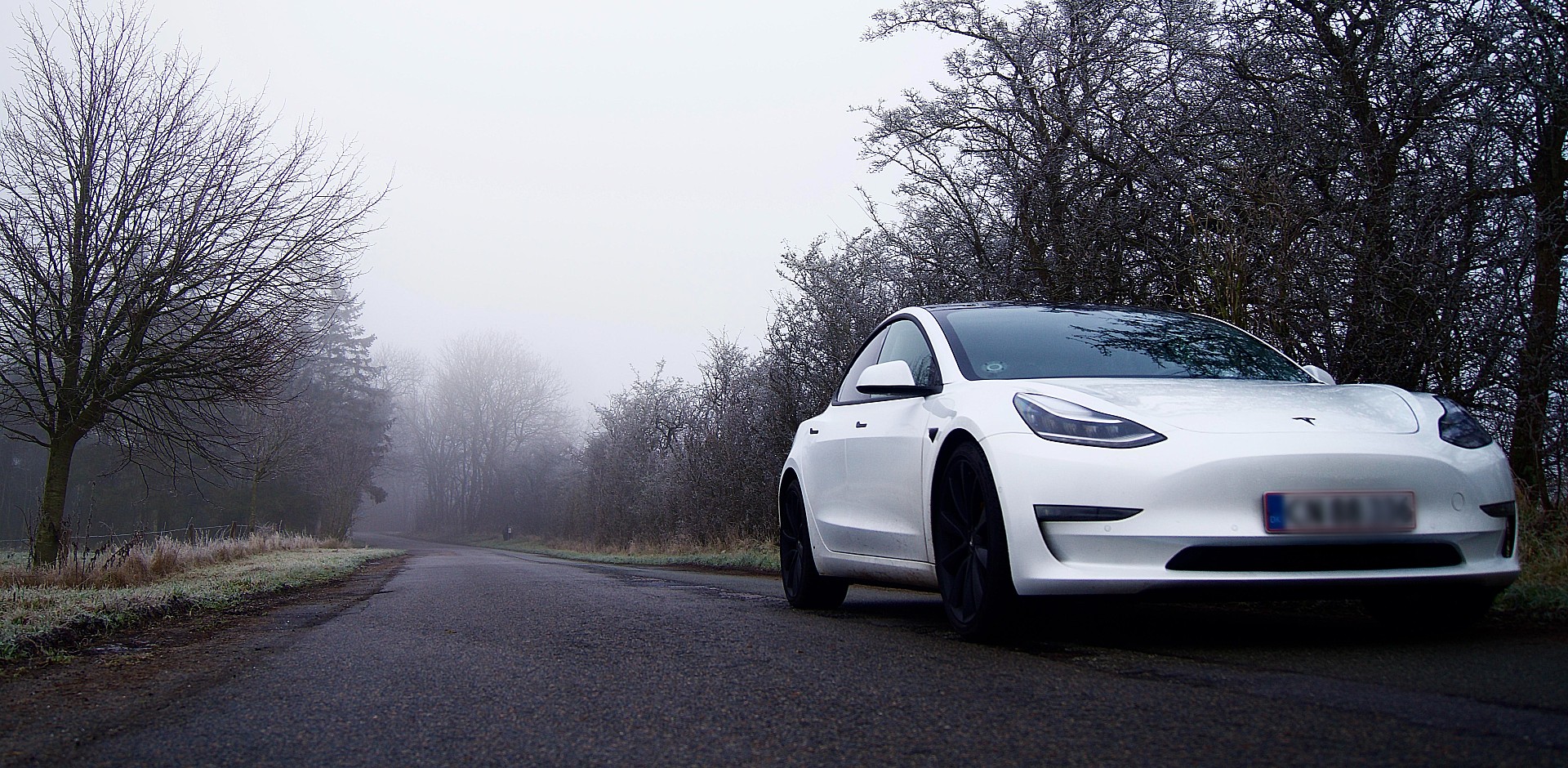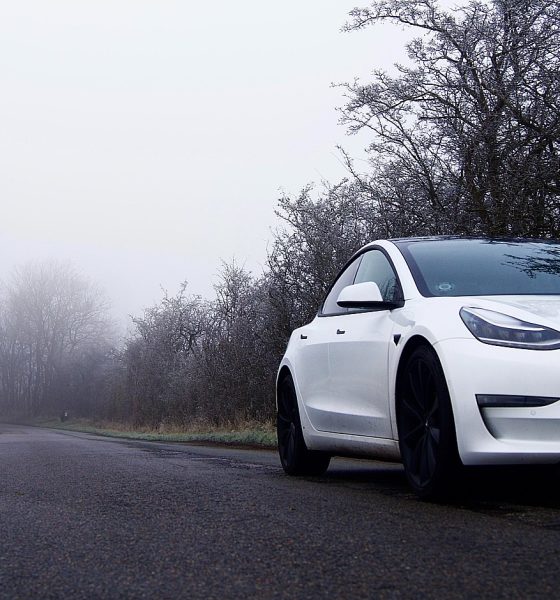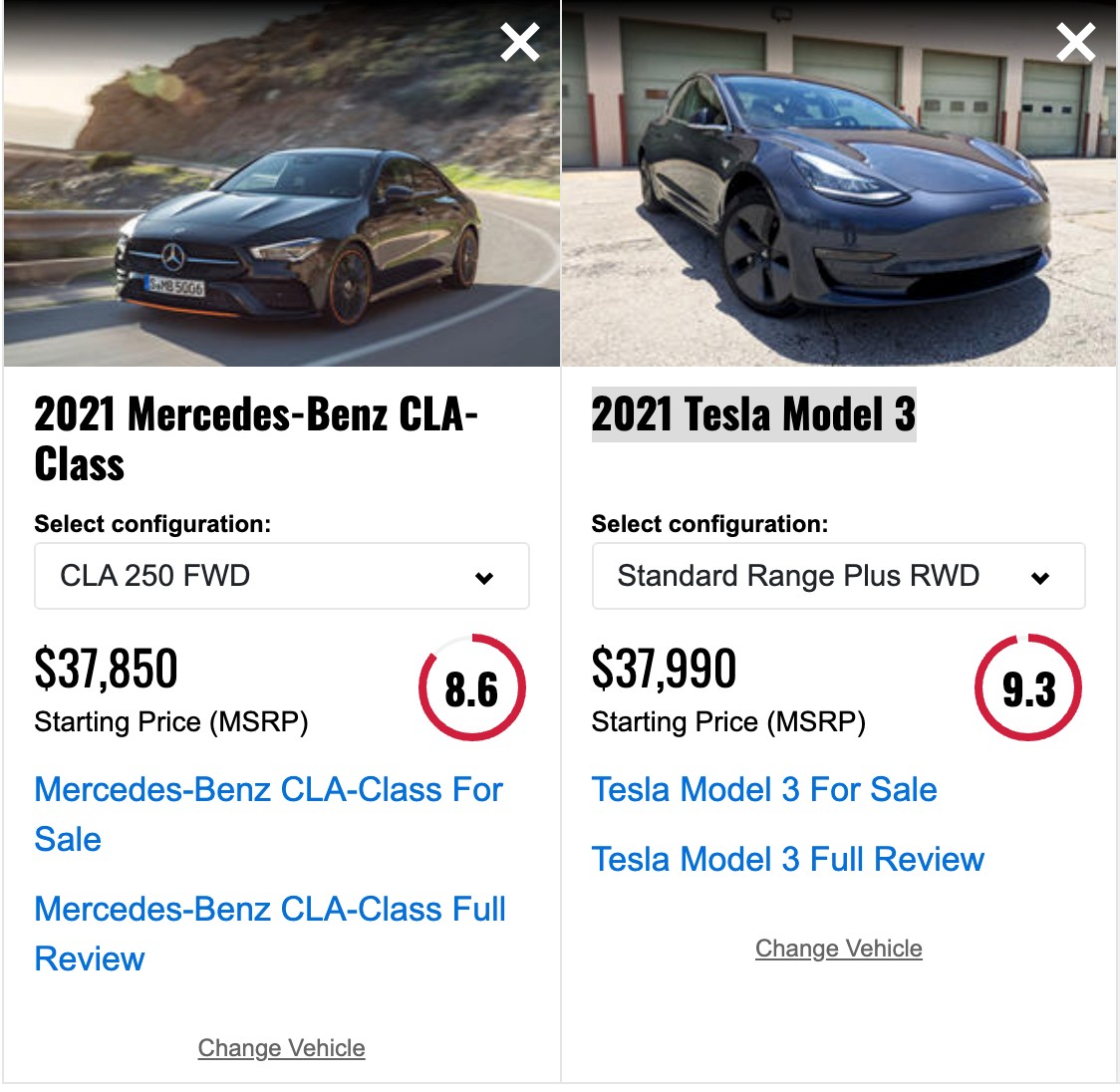

Lifestyle
Tesla’s $7,000 EV incentive is a nail in the coffin for ICE competitors
The reintroduction of the electric vehicle tax incentive credit could be a nail in the coffin to Tesla’s competitors as if the company needed any more help to bury its competitors into the ground officially.
Earlier this week, it was reported that Tesla could be primed to receive the new EV incentives that would grant a $7,000 tax credit to the first 600,000 Tesla EVs sold in the United States. The new GREEN Act indicates that the number of applicable EVs per manufacturer would increase by 400,000 cars, from 200,000 to 600,000, making a considerable number of Tesla’s projected sales for 2021 reasonably less expensive for car buyers.
While Tesla didn’t give an exact estimation for how many cars it plans to build this year, several analysts have projected numbers between 800,000 and 950,000. However, Tesla’s Q4 Earnings Update Letter has a total output of 1,050,000 between its two active production facilities.
Tesla to gain access to 400k more $7k EV tax credits amid Biden’s sustainability push
The GREEN Act states:
“The bill also extends existing tax incentives available for the sale of electric vehicles. The bill increases the electric vehicle credit cap for manufacturers to 600,000 vehicles, but reduces the credit by $500 after the first 200,000 vehicles sold. This would replace the current phaseout period that begins with 200,000 vehicles sold, with a phaseout period that instead begins during the second calendar quarter after the 600,000-vehicle threshold is reached.
“At the start of the new phaseout period created under the bill, the credit is reduced by 50 percent for one calendar quarter and subsequently ends. For manufacturers that already passed the 200,000 threshold before the enactment of the bill, the number of vehicles sold in between 200,000 and those sold on the date of enactment are excluded in determining when the 600,000 threshold is reached.”
Tesla is sitting pretty if this happens to go through. For several reasons, the reintroduction of the EV incentive to Tesla’s cars could effectively bury conventional automakers who have not put a more serious and specific focus on the development of electric powertrains.
It is no secret that the future of vehicles is electric. While classic muscle cars will likely always be in existence for decades to come, mass-market vehicles from other manufacturers, like Ford Escapes, Honda Civics, Toyota Camrys, and Chevy Malibus, will fade away. Let’s be honest with each other here: Nobody is collecting any of them; they just don’t have the “it” factor that a classic vehicle has.
This is a preview from our weekly newsletter. Each week I go ‘Beyond the News’ and handcraft a special edition that includes my thoughts on the biggest stories, why it matters, and how it could impact the future.
Even today’s Mustangs, Camaros, and Corvettes don’t hold the value, the sentimental meaning, or the history that early builds have. And even worse, they don’t have the performance, the speed, or the technology and efficiency that an electric car has. EVs are the best of both worlds, and when you buy a Tesla, there is no better car to display that in the most exaggerated manner.
Subtracting another $7,000 from the price of any of Tesla’s vehicles thanks to the GREEN Act would be game over. The Model 3 SR+ would be well below the average cost of a car in the United States today while offering environmentally-friendly transportation, acceleration that is well beyond the norm for a combustion engine car, and pricing that just cannot be matched by some of the “luxury, high-performance” vehicles that are offered in today’s market.
Comparative to the Tesla Model 3 SR+ is the 2021 Mercedes-Benz CLA-Class. Both start at price points slightly below $38,000, but the specs speak for themselves. The Model 3 has a significantly faster 0-60 time at 5.3 seconds, while the Benz sits at 6.2. The quarter-mile race wouldn’t be close either, with the CLA getting to the line in 13.8 seconds. The Model 3 would be finished in 13.1, according to Matthew Cjel, who did three 1/4-mile runs with his SR+ and got times of 13.185, 13.181, and 13.218.
CarBuzz
While competitive without the incentive, pricing wouldn’t be close if the $7,000 credit was applied. That would bring the Model 3 to just under $31,000. Additionally, the CLA only gets 25 MPG City and 35 MPG highway. With spiking gas prices, that would be a considerably frequent trip to the local Shell station. The Model 3 gets 263 miles per charge and can be charged from home or at a local Supercharger for a fraction of the price.
This is just one example of where the $7,000 credit would make EVs more appealing than gas cars to those who remain on the fence. Price parity is becoming an outdated argument, and with Tesla’s battery advancements and increased production rates, cars will only become less-expensive every year. Soon enough, Tesla’s $25k mass-market vehicle will hit the roads, and there will be an overwhelming sense of demand from new car buyers. The initial 600,000 EVs will likely disappear as fast as turkey on Thanksgiving, making the tax credit obsolete in virtually no time.
The only real concern that could arise from the new credit is it is likely to increase demand significantly, which could bring issues for Tesla’s projects that have been delayed due to battery constraints. I don’t know how more 3 and Y purchases, along with S and X, would affect Roadster, Semi, or Cybertruck production. However, Tesla is battery constrained, and available cells would likely be subjected to the S3XY lineup, which could further delay the other projects.
Demand is never a bad thing, though. The higher sales of its mass-market vehicles would give Tesla even more capital to invest in battery manufacturing and tech. It would give them more money to source cells from third-party suppliers. It also would only help the company’s financials for many quarters to come. But battery shortages have halted the Semi and Roadster project several times, and the Cybertruck now seems like it could be subjected to the same issues. It seems like Musk could have been hinting toward that in the podcast with Rogan yesterday, where he said that they can “hopefully” begin volume production next year. During the Q4 EC, Musk also said:
“If we get lucky, we’ll be able to do a few deliveries toward the end of this year, but I expect volume production to be in 2022.”
Let’s hope things continue to expand in a timely fashion, I think the EV incentive and the long list of advantages that EVs have over their ICE competitors will be recognized by everyone who remains in limbo over which power source will “fuel” their next vehicle.
A big thanks to our long-time supporters and new subscribers! Thank you.
I use this newsletter to share my thoughts on what is going on in the Tesla world. If you want to talk to me directly, you can email me or reach me on Twitter. I don’t bite, be sure to reach out!

Lifestyle
Tesla Model S Plaid battles China’s 1500 hp monster Nurburgring monster, with surprising results
There is just something about Tesla’s tuning and refinement that makes raw specs seem not as game-changing.

The Tesla Model S Plaid has been around for some time. Today, it is no longer the world’s quickest four-door electric sedan, nor is it the most powerful. As per a recent video from motoring YouTube channel Carwow, however, it seems like the Model S Plaid is still more than a match for some of its newer and more powerful rivals.
The monster from China
The Xiaomi SU7 Ultra is nothing short of a monster. Just like the Model S Plaid, it features three motors. It also has 1,548 hp and 1,770 Nm of torque. It’s All Wheel Drive and weighs a hefty 2,360 kg. The vehicle, which costs just about the equivalent of £55,000, has been recorded setting an insane 7:04.957 at the Nurburgring, surpassing the previous record held by the Porsche Taycan Turbo GT.
For all intents and purposes, the Model S Plaid looked outgunned in Carwow’s test. The Model S Plaid is no slouch with its three motors that produce 1,020 hp and 1,420 Nm of torque. It’s also a bit lighter at 2,190 kg despite its larger size. However, as the Carwow host pointed out, the Model S Plaid holds a 7:25.231 record in the Nurburgring. Compared to the Xiaomi SU7 Ultra’s record, the Model S Plaid’s lap time is notably slower.
Real-world tests
As could be seen in Carwow’s drag races, however, Tesla’s tech wizardry with the Model S Plaid is still hard to beat. The two vehicles competed in nine races, and the older Model S Plaid actually beat its newer, more powerful counterpart from China several times. At one point in the race, the Xiaomi SU7 Ultra hit its power limit due to its battery’s temperature, but the Model S Plaid was still going strong.
The Model S Plaid was first teased five years ago, in September 2020 during Tesla’s Battery Day. Since then, cars like the Lucid Air Sapphire and the Xiaomi SU7 Ultra have been released, surpassing its specs. But just like the Model Y ended up being the better all-rounder compared to the BYD Sealion 7 and the MG IM6, there is just something about Tesla’s tuning and refinement that makes raw specs seem not as game-changing.
Check out Carwow’s Model S Plaid vs Xiaomi SU7 drag race video below.
Lifestyle
500-mile test proves why Tesla Model Y still humiliates rivals in Europe
On paper, the BYD Sealion 7 and MG IM6 promised standout capabilities against the Model Y.

BYD is seeing a lot of momentum in Europe, so much so that mainstream media has taken every opportunity to argue that the Chinese automaker has beaten Tesla in the region. But while BYD sales this year in Europe are rising and Tesla’s registrations remain challenged, the raw capabilities of vehicles like the Model Y are difficult to deny.
This was highlighted in a 500-mile challenge by What Car? magazine, which showed that the new Tesla Model Y is more efficient, cheaper to run, and more reliable than rivals like the BYD Sealion 7, and even the nearly 400 KW-charging MG IM6.
Range and charging promises
On paper, the BYD Sealion 7 and MG IM6 promised standout capabilities against the Model Y. The Sealion 7 had more estimated range and the IM6 promised significantly faster charging. When faced with real-world conditions, however, it was still the Model Y that proved superior.
During the 500-mile test, the BYD nearly failed to reach a charging stop, arriving with less range than its display projected, as noted in a CarUp report. MG fared better, but its charging speeds never reached its promised nearly-400 kW charging speed. Tesla’s Model Y, by comparison, managed energy calculations precisely and arrived at each stop without issue.
Tesla leads in areas that matter
Charging times from 25% to 80% showed that the MG was the fastest at 17 minutes, while Tesla and BYD were close at 28 and 29 minutes, respectively. Overall efficiency and cost told a different story, however. The Model Y consumed 19.4 kWh per 100 km, compared to 22.2 for MG and 23.9 for BYD. Over the full trip, Tesla’s charging costs totaled just £82 thanks to its supercharger network, far below BYD’s £130 and MG’s £119.
What Car? Magazine’s testers concluded that despite BYD’s rapid sales growth and the MG IM6’s seriously impressive charging speeds, Tesla remains the more compelling real-world choice. The Model Y just offers stability, efficiency, and a proven charging infrastructure through its Supercharging network. And as per the magazine’s hosts, the Model Y is even the cheapest car to own among the three that were tested.
Watch What Car? Magazine’s 500-mile test in the video below.
Lifestyle
Tesla Cybertruck slapped with world’s least intimidating ticket, and it’s pure cringe
One cannot help but cringe and feel second-hand embarrassment at the idea of a person just driving around with a stack of these babies.

A Cybertruck parked at Stanford Shopping Center in California was recently hit with what might be the most try-hard piece of paper ever slipped under a wiper blade: a “fake citation” accusing the driver of supporting a “fascist car.”
The note, shared on X by Tesla staff program manager Ryan Torres, quickly made the rounds on X, where it quickly gained attention as an example of how not to protest.
The world’s least intimidating ticket
According to the citation, the supposed “violation” was “driving a fascist car.” The remedial action? Take the bus, call an Uber, or ride a bike. The note also dubbed Elon Musk a “chainsaw-wielding Nazi billionaire.” Now, protests against Tesla and Elon Musk have become commonplace this year, but one cannot help but cringe and feel second-hand embarrassment at the idea of a person just driving around with a stack of fake anti-Tesla/Musk citations.
Torres pointed out the irony himself in his post on X. Tesla currently employs over 140,000 Americans, and SpaceX has put the U.S. firmly back at the top of space technology. As Torres put it, maybe the person behind the world’s least intimidating ticket should “read a book on innovation before vandalizing” other people’s property.
Peak performative clownery
Not to mention that the fake ticket’s logic collapses under its own weight. EVs like the Cybertruck are literally designed to reduce emissions, not “destroy the economy.” If anything, Tesla has bolstered the United States’ economy by fueling jobs in engineering, manufacturing, and clean energy. It’s not the first time a Tesla has been the target of vandalism or politically charged notes, but this one stands out for sheer cringe value.
Torres summed it up neatly: “Peak clownery.” On that point, at least, the citation earns full marks. In a way, though, perhaps cringe fake tickets are not as bad as the literal firebombs that were being thrown at Tesla stores and cars earlier this year because some critics were gleefully misinformed about Elon Musk.









